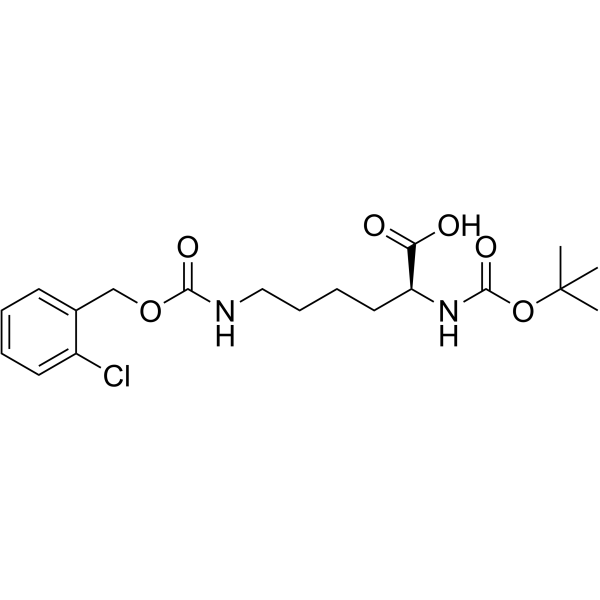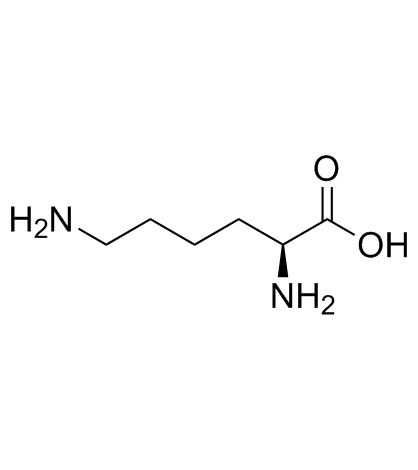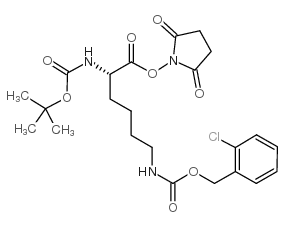54613-99-9
| Name | (2S)-6-[(2-chlorophenyl)methoxycarbonylamino]-2-[(2-methylpropan-2-yl)oxycarbonylamino]hexanoic acid |
|---|---|
| Synonyms |
N-(tert-Butoxycarbonyl)-N-{[(2-chlorobenzyl)oxy]carbonyl}-L-lysine
MFCD00038386 L-Lysine, N-[[(2-chlorophenyl)methoxy]carbonyl]-N-[(1,1-dimethylethoxy)carbonyl]- (2S)-6-({[(2-Chlorobenzyl)oxy]carbonyl}amino)-2-({[(2-methyl-2-propanyl)oxy]carbonyl}amino)hexanoic acid L-Lysine, N6-(((2-chlorophenyl)methoxy)carbonyl)-N2-((1,1-dimethylethoxy)carbonyl)- N-{[(2-Chlorobenzyl)oxy]carbonyl}-N-{[(2-methyl-2-propanyl)oxy]carbonyl}-L-lysine AmbotzBAA1102 N6-(((2-Chlorophenyl)methoxy)carbonyl)-N2-((1,1-dimethylethoxy)carbonyl)-L-lysine Boc-Lys(2-Cl-Z)-OH N-Boc-N'-(2-chlorobenzyloxycarbonyl)-L-lysine |
| Description | Boc-Lys(2-Cl-Z)-OH is a lysine derivative[1]. |
|---|---|
| Related Catalog | |
| In Vitro | Amino acids and amino acid derivatives have been commercially used as ergogenic supplements. They influence the secretion of anabolic hormones, supply of fuel during exercise, mental performance during stress related tasks and prevent exercise induced muscle damage. They are recognized to be beneficial as ergogenic dietary substances[1]. |
| References |
| Density | 1.2±0.1 g/cm3 |
|---|---|
| Boiling Point | 608.3±55.0 °C at 760 mmHg |
| Melting Point | 70-73 °C |
| Molecular Formula | C19H27ClN2O6 |
| Molecular Weight | 414.880 |
| Flash Point | 321.7±31.5 °C |
| Exact Mass | 414.155762 |
| PSA | 113.96000 |
| LogP | 3.73 |
| Vapour Pressure | 0.0±1.8 mmHg at 25°C |
| Index of Refraction | 1.532 |
| Storage condition | 2-8°C |
| Hazard Codes | Xi:Irritant |
|---|---|
| Risk Phrases | R36/37/38 |
| Safety Phrases | S26-S36 |
| WGK Germany | 3 |
| Precursor 0 | |
|---|---|
| DownStream 3 | |




